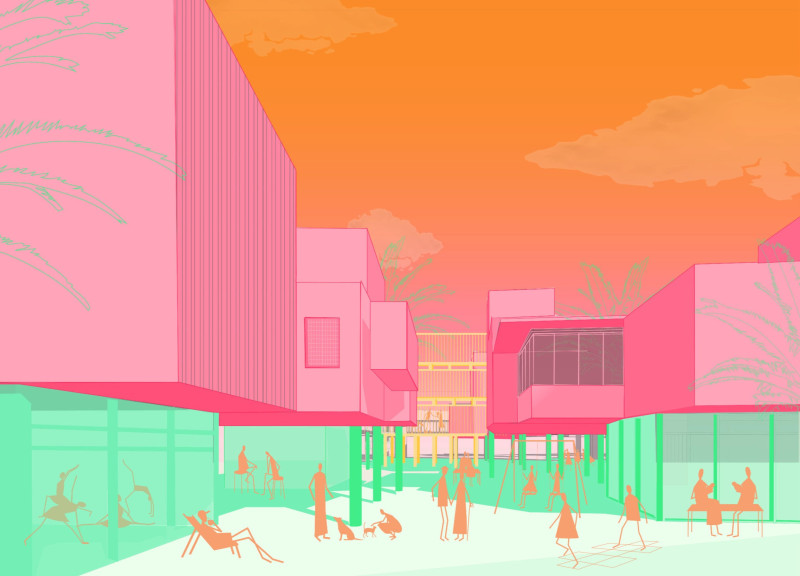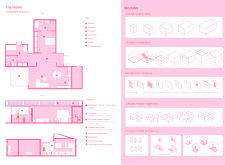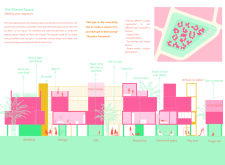5 key facts about this project
The design "Utopia for an Aging Society" is located in Al Khawaneej 2, Dubai, focusing on creating suitable living environments for an aging population. The approach blends adaptable housing with a strong emphasis on community, encouraging social interaction among residents of various ages. The overall concept revolves around modular housing units that can change in size and function, promoting a more inclusive living space tailored to family needs.
Modular Design
The housing units are designed with flexibility in mind, allowing them to be modified as family dynamics change. This means that spaces can easily adapt to different uses, supporting both young and older generations living together. The modular approach acknowledges shifts in demographics, creating homes that can evolve over time.
Community-Centric Spaces
The design takes inspiration from traditional UAE neighborhoods, known as "freej," which feature high density and a focus on walkability. Shared public spaces, including kitchens, gardens, and recreational areas, are placed throughout the design to encourage residents to interact. These communal features foster a lively atmosphere and strengthen connections among community members.
Sustainability and Innovation
Sustainability is a core value in the design, showcasing various innovative technologies. For instance, the inclusion of a Photovoltaic Thermal Hybrid Solar Collector allows units to generate their own electricity and hot water, reducing external resource dependence. Hydropanels are also integrated into the project to capture drinking water from sunlight and air, addressing essential needs efficiently and responsibly.
Materiality
Attention to materials is evident in features such as the operable shading door, made from recycled compressed palm ribs. This choice reflects local environmental considerations and contributes to energy efficiency by providing adjustable solar shading. Additionally, the microshade operable window improves the overall energy performance of the buildings, minimizing the need for mechanical cooling.
A distinct aspect of the design is the thoughtful incorporation of communal areas that function not only for practical use but also as essential points for social engagement, enhancing the living experience for all residents.






















































